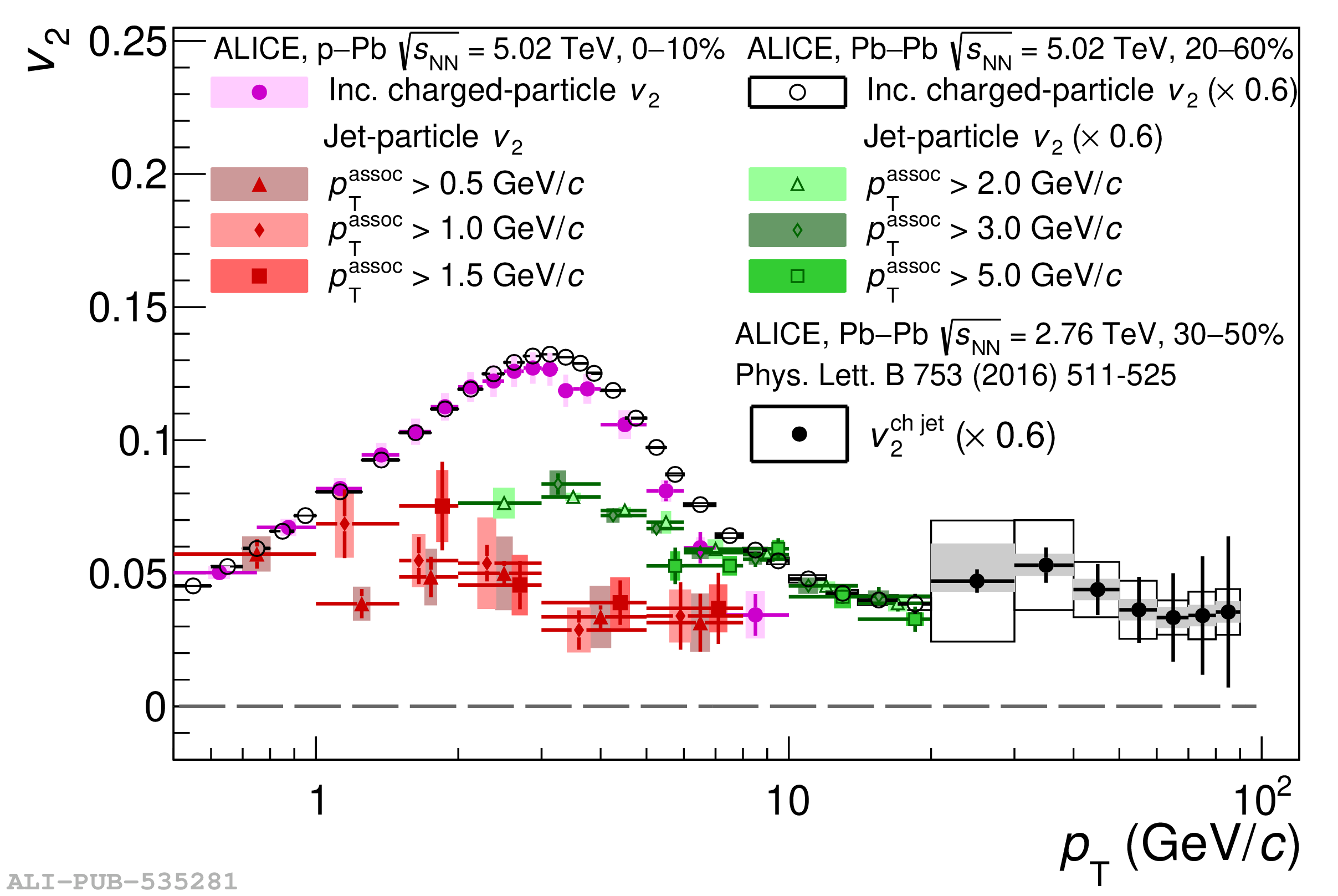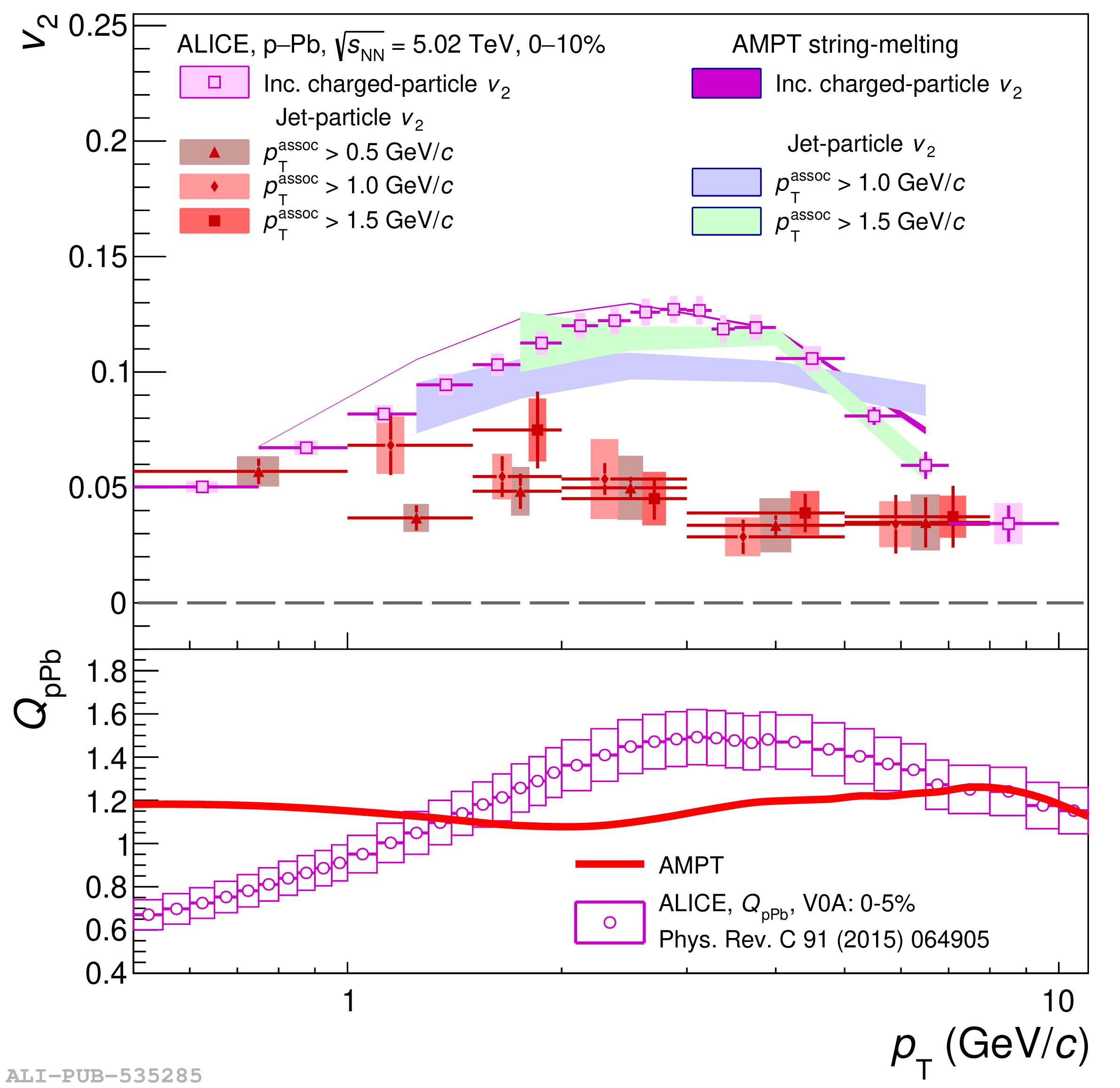The azimuthal anisotropy of particles associated with jets (jet particles) at midrapidity is measured for the first time in p-Pb and Pb-Pb collisions at $\sqrt{s_{\rm NN}}$ = 5.02 TeV down to transverse momentum ($p_{\rm T}$) of 0.5 GeV/$c$ and 2 GeV/$c$, respectively, with ALICE. The results obtained in p-Pb collisions are based on a novel three-particle correlation technique. The azimuthal anisotropy coefficient $v_2$ in high-multiplicity p-Pb collisions is positive, with a significance reaching 6.8$\sigma$ at low $p_{\rm T}$, and its magnitude is smaller than in semicentral Pb-Pb collisions. In contrast to the measurements in Pb-Pb collisions, the $v_2$ coefficient is also found independent of $p_{\rm T}$ within uncertainties. Comparisons with the inclusive charged-particle $v_2$ and with AMPT calculations are discussed. The predictions suggest that parton interactions play an important role in generating a non-zero jet-particle $v_2$ in p-Pb collisions, even though they overestimate the reported measurement. These observations shed new insights on the understanding of the origin of the collective behaviour of jet particles in small systems such as p-Pb collisions, and provide significant stringent new constraints to models.
JHEP 08 (2024) 234
HEP Data
e-Print: arXiv:2212.12609 | PDF | inSPIRE
CERN-EP-2022-290
Figure group




















